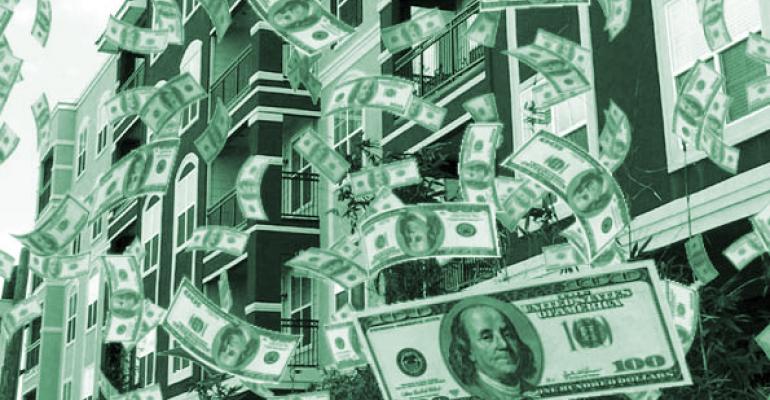Lenders are finally rewarding apartment properties that use less energy with lower interest rates and larger loans—and apartment owners are eagerly signing up.
“We see a lot of interest from our borrowers,” says Stephanie McFadden, managing director of debt and structured finance in the capital markets group of real estate services firm CBRE.
Both Fannie Mae and the Federal Housing Authority (FHA) have created loan programs that recognize the value of apartment properties that use less energy. Apartment buildings that include green design features typically have lower utility bills that can make them more profitable and less risky for lenders. Fannie Mae and FHA now recognize likely energy savings in their underwriting calculations and in the interest rates they offer.
FHA energy incentives
To qualify for an FHA loan program, an apartment property will have to be certified to meet one of a long list of recognized sustainable development standards, such as the Leadership in Energy and Environmental Design (LEED) standard created by the U.S. Green Building Council. FHA lowers its “mortgage insurance premium” for these energy-efficient properties, often bringing down the overall interest rate by as much as 45 basis points, according to CBRE. FHA also recognizes part of the likely savings from planned energy improvements, which can increase the anticipated net operating income (NOI) for the property. “There is a lot of interest from our new construction and substantial rehabilitation clients,” says McFadden.
Apartment properties can also benefit from the FHA incentives if they qualify as being “broadly affordable.” Apartment buildings that are both energy-efficient and affordable benefit from lower FHA fees, in addition to the low interest rates.
Fannie Mae Green Rewards
Fannie Mae also offers lower interest rates for apartment properties that can meet high green building standards like LEED. The properties must be able to achieve at least savings of at least 20 percent in energy or water use. Fannie Mae promises “preferential pricing” for these properties. Recent deals show substantial savings—often 30 to 40 basis points lower than standard pricing, according to Mitchell Kiffe, senior managing director of debt and structured finance for CBRE. Fannie Mae also recognizes in its underwriting 50 percent of the projected value of energy-saving improvements planned by the borrowers.
All of these incentives work out to larger loans for energy-efficient apartment properties. The lower interest rates offered by these programs can add millions of dollars to the size of the loan that the property can support—up to 5 percent more loan proceeds than a typical loan, according to Fannie Mae.
The apartment communities that earn green building certifications like LEED tend to be new construction or extensive rehabs. That’s because it can be challenging to get enough new insulation into an existing apartment building to meet green standards.
Fannie Mae’s Green Rewards program is helping make loans for these new apartment properties. “Fannie Mae has done an incredible job of creating a product that is competing with life company lenders in a space that life companies have dominated: new apartments with green designations,” says Charles Halladay, managing director with financial intermediary HFF.
Both FHA and Fannie Mae are planning to issue bonds backed by their loans to sustainably-developed apartment properties that they can market as “green” mortgage-backed securities. Investors interested in green investments may help provide extra demand for these bonds, lessening volatility and helping keep pricing for the bonds steady, along with interest rates for the loans. “Green investors may be more active in the auctions for these green MBS,” says McFadden.
Affordable housing properties benefit
Apartment properties that qualify as affordable housing properties can also get addition loan proceeds to pay for improvements that save energy and water through Fannie Mae’s Green Preservation Plus program. To qualify, the green improvements don’t need to go so far as to meet a green standard like LEED, though they do need to show measurable results.
As a result, owners of older affordable housing properties are able to take advantage of Green Preservation Plus without going through the kind of gut rehab that’s often required for an older building to meet a standard like LEED. Affordable housing borrowers have already submitted applications to borrow billions through the program, which was unveiled early this year, says Kiffe.

